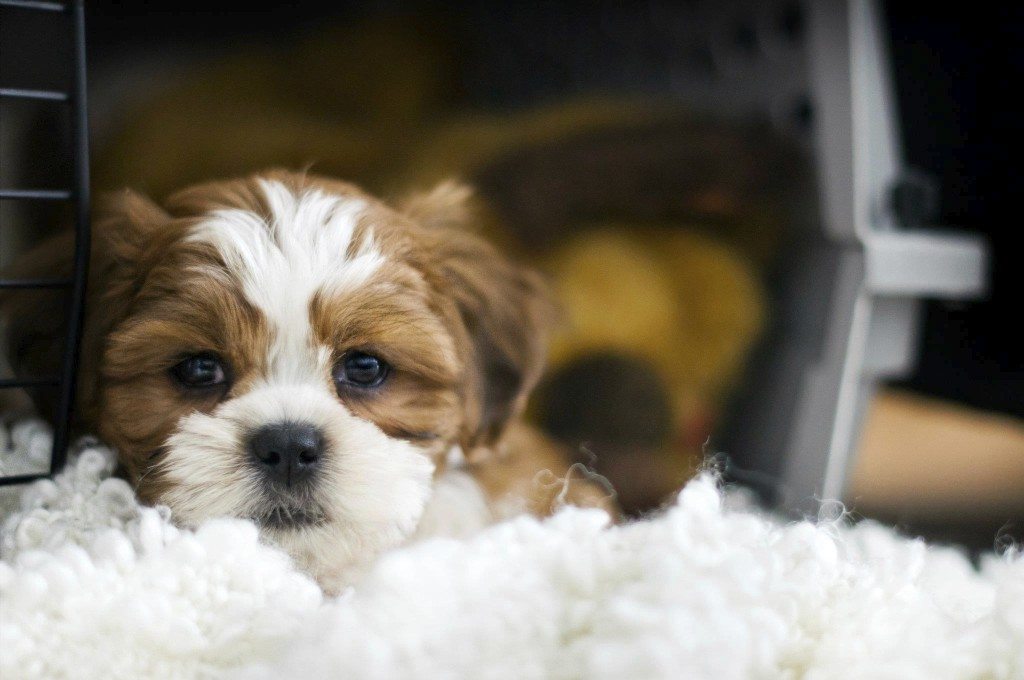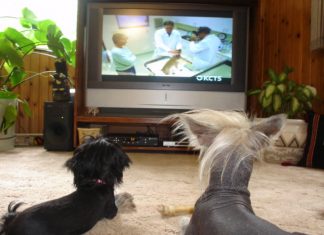Why Crate Train?
Crate training a puppy is a great way to ensure you will have fewer, if any, accidents while you teach your puppy where s/he should eliminate. Crate training an adult dog can be a valuable behavior too, for times when a crate may be the safest place for your dog. For example, if you take him on family vacations, a crate in your hotel room will help your dog spend some time alone without stress. Multiple dog households can avoid many potential problems if everyone has their own crate where they can eat in peace and spend some quiet time each day.
Most Important Thing To Remember
The first and most important step in crate training is to make sure your dog or puppy LOVES the crate. To teach a dog to love the crate, I use a variation of Susan Garrett’s “Crate Games” which is available on DVD from her website www.susangarrettdogagility.com.
Steps For Crate Training Success
- Make sure your dog has been out to potty and is hungry. You should have plenty of small treats cut and placed on top of the crate in a large bowl. Cooked beef or chicken make good crate training treats.
- Set up the crate in a place that is free of distractions.
- Open the crate door and look inside, as if you just discovered this place. Do not put your dog in the crate, or throw a treat in. Just look inside and see if your dog wanders in.
- Be patient. If your dog sniffs or looks inside, immediately toss the treat inside and praise your dog enthusiastically. Stay near the entrance to the crate but do not block access. Allow him to exit if he wants to, but ignore him completely while he is outside of the crate.
- After a moment, if your dog has not already wandered back inside the crate, take another look inside as before. As soon as your dog shows the slightest interest begin giving lavish praise and attention and toss a treat into the crate again.
- If your dog has already wandered into the crate, give him the treat instead of tossing it into the crate. If your dog is calmly standing or sitting in the crate, continue to praise enthusiastically while you feed one treat after another, leaving only enough time between treats for your dog to swallow it. During this time it is important that you are giving the dog treats by reaching into the crate and bringing your hand up to the mouth, which will help your dog sit while he is feasting on your offerings.
In is Amazing! Out is B-O-R-I-N-G
- After about a dozen treats, step back and ask your dog to “come on out”. When your dog comes out look away, say no more and completely ignore him again while he is out.
- Most dogs will pause a moment and then wander back into the crate. When he does, immediately begin feeding treats and lavishly praising as before. Hesitate just a moment while you close the crate door and continue the praise and give treats through the crate opening at the top or side of the crate.
- Again, step back, open the crate door and ask your dog to “come on out”. Immediately, again, completely ignore your dog as if he wasn’t there. Be sure to keep a discreet eye on your dog while he thinks through this process. If you have made the difference completely clear; being in the crate is amazing, being out of the crate is b-o-r-i-n-g, your dog will go right back into the crate again.
- Repeat the above for another dozen or so treats with the crate door closed, then ask him to “come on out” once again. Most people can take a break at this time, but you will need to close the crate door so your dog cannot wander into the crate on his own.
- Leave the room (be sure you have the bowl of treats in hand) and allow your dog to follow you out of the room while you continue to ignore him.
- For puppies, this is a good time to wander outside with them to allow them time to run around a bit and perhaps go potty. If it is a puppy you are training for the purpose of house training, then do praise and make a big deal of your puppy once he has finished eliminating. You are finished for time being with making your dog love the crate.
Most dogs are crate lovers after one more session of the above method. You should do this session later the same day or the next day. If your dog has already shown fear of the crate, you may need to repeat the session each day for a few days, or until your dog easily goes into the crate when you open the door. You should avoid physically putting your dog in the crate to make the process go more smoothly and quickly.
Images: iStock







